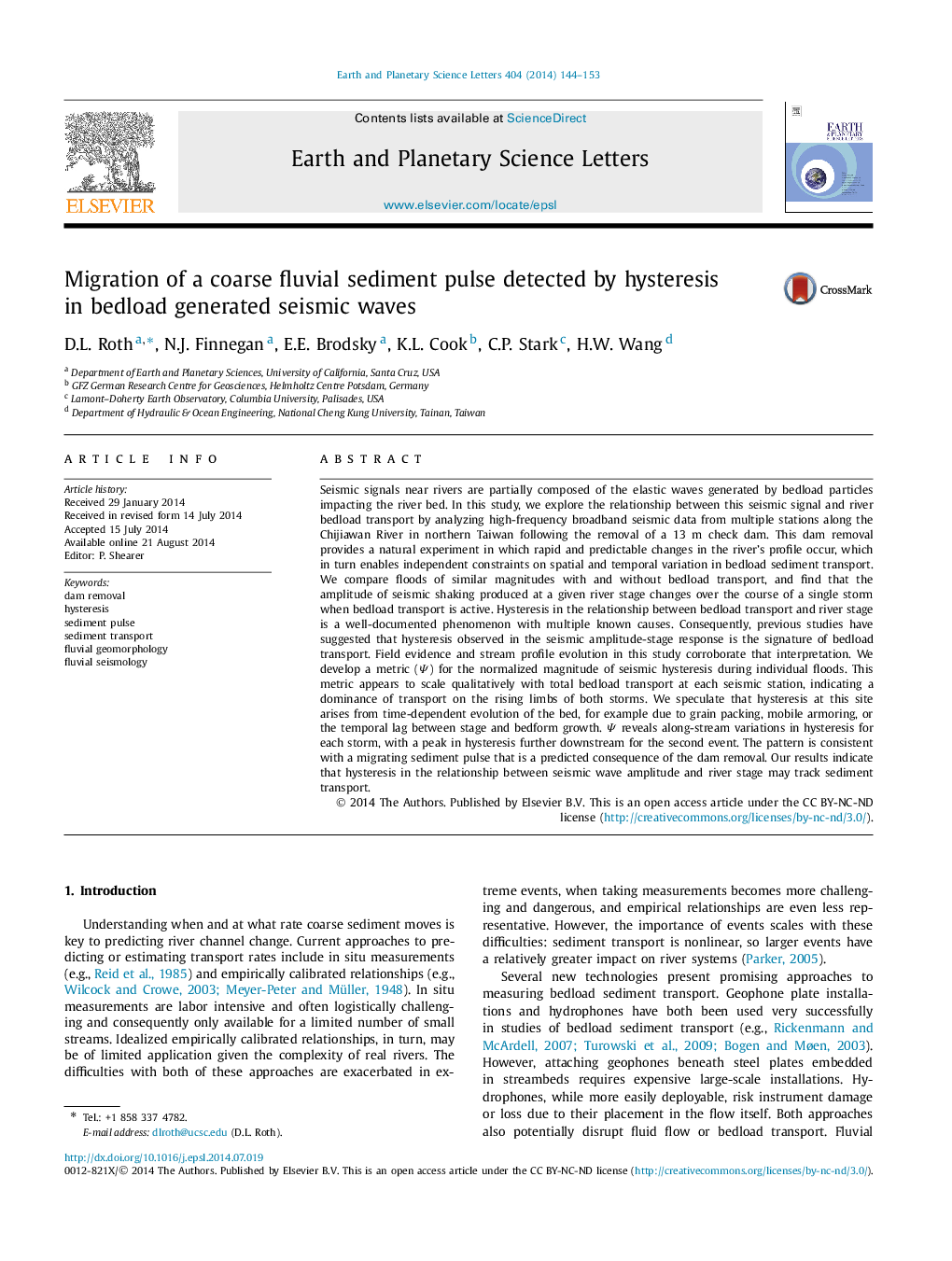| کد مقاله | کد نشریه | سال انتشار | مقاله انگلیسی | نسخه تمام متن |
|---|---|---|---|---|
| 6429011 | 1634752 | 2014 | 10 صفحه PDF | دانلود رایگان |
- We compare two floods of similar magnitudes following a dam removal.
- Sediment transport is constrained by field observations and bed elevation changes.
- We develop a metric Ψ for hysteresis between seismic amplitude and flow depth.
- Ψ appears to scale with total bedload transport at each seismic station.
- Ψ tracks the downstream migration of a sediment pulse released from behind the dam.
Seismic signals near rivers are partially composed of the elastic waves generated by bedload particles impacting the river bed. In this study, we explore the relationship between this seismic signal and river bedload transport by analyzing high-frequency broadband seismic data from multiple stations along the Chijiawan River in northern Taiwan following the removal of a 13 m check dam. This dam removal provides a natural experiment in which rapid and predictable changes in the river's profile occur, which in turn enables independent constraints on spatial and temporal variation in bedload sediment transport. We compare floods of similar magnitudes with and without bedload transport, and find that the amplitude of seismic shaking produced at a given river stage changes over the course of a single storm when bedload transport is active. Hysteresis in the relationship between bedload transport and river stage is a well-documented phenomenon with multiple known causes. Consequently, previous studies have suggested that hysteresis observed in the seismic amplitude-stage response is the signature of bedload transport. Field evidence and stream profile evolution in this study corroborate that interpretation. We develop a metric (Ψ) for the normalized magnitude of seismic hysteresis during individual floods. This metric appears to scale qualitatively with total bedload transport at each seismic station, indicating a dominance of transport on the rising limbs of both storms. We speculate that hysteresis at this site arises from time-dependent evolution of the bed, for example due to grain packing, mobile armoring, or the temporal lag between stage and bedform growth. Ψ reveals along-stream variations in hysteresis for each storm, with a peak in hysteresis further downstream for the second event. The pattern is consistent with a migrating sediment pulse that is a predicted consequence of the dam removal. Our results indicate that hysteresis in the relationship between seismic wave amplitude and river stage may track sediment transport.
Journal: Earth and Planetary Science Letters - Volume 404, 15 October 2014, Pages 144-153
